Land Invertebrates
Media

Species Types
Scientific Name
Panorpa spp.
Description
Male scorpionflies will make you look twice, because the abdomen is tipped with what looks like a scorpion stinger! These nifty insects cannot sting, however.
Media

Species Types
Scientific Name
About 84 species in North America.
Description
Many blow flies are so shiny and colorful they’re called greenbottles and bluebottles. But pretty as they are, it’s hard not to be repulsed by their larval diets.
Media
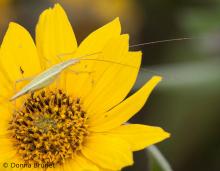
Species Types
Scientific Name
About 20 species in North America in subfamily Oecanthinae
Description
Tree crickets, or pale bush crickets, are a subfamily of crickets that are little seen but often heard. True to their name, instead of living on the ground, they live in trees, bushes, and tall herbaceous plants.
Media
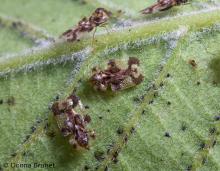
Species Types
Scientific Name
About 165 species in North American north of Mexico
Description
Grayish, small, flattened, and rectangular, lace bugs have a lacy network of ridges on the wings and body. They suck nutrients from foliage with their beaks. The resulting pale spots on leaves might be the first sign of their presence.
Media
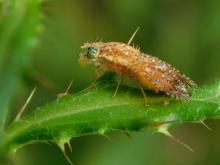
Species Types
Scientific Name
About 300 species in North America north of Mexico
Description
Tephretid fruit flies, in the family Tephritidae, are often called peacock flies for the intricately patterned, often brightly colored wings of many species.
Media
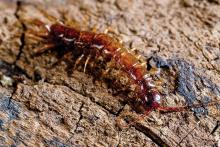
Species Types
Scientific Name
Hundreds of species in North America north of Mexico
Description
Centipedes are familiar to anyone who has overturned rocks and logs, sifted through leaf litter, or dug in the soil. Learn more about Missouri's members of class Chilopoda.
Media

Species Types
Scientific Name
Approx. 150 species of land snails and slugs in Missouri
Description
Most people know land snails and slugs when they see these interesting animals. Missouri has about 150 species in 25 families.
Media
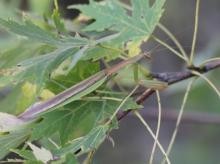
Species Types
Scientific Name
Tenodera sinensis (formerly T. aridifolia)
Description
The Chinese mantis is a large, green and tan ambush predator. This nonnative insect is often called a “praying mantis” because the front legs resemble hands folded in prayer.
Media
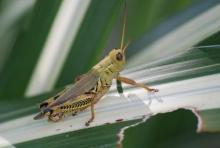
Species Types
Scientific Name
Melanoplus differentialis
Description
The differential grasshopper is familiar to most Missourians. Originally it lived only in wet meadows and creek bottomlands, but with the spread of farms, it has become a pest of many food crops.
Media
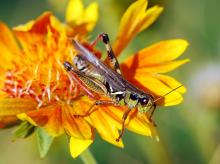
Species Types
Scientific Name
Melanoplus femurrubrum
Description
The red-legged grasshopper is a type of short-horned grasshopper common in Missouri. It reaches about 1 inch in length and is often seen flicking or flying away in open habitats.
See Also



Media

Species Types
Scientific Name
Cisseps fulvicollis
Description
The yellow-collared scape moth is more often “orange-collared.” And whether you think it looks more like a firefly or a wasp, it’s still a moth!
Media

Species Types
Scientific Name
Nearly 150 species in North America north of Mexico
Description
Slim, delicate plume moths are instantly recognizable by their T-shaped silhouette, long legs, and muted shades of tan and brown. It can be hard to separate the various species.
Media

Species Types
Scientific Name
Pyrrharctia isabella
Description
Not many people know the adult Isabella tiger moth when they see one, but we’re all acquainted with its caterpillar, the woolly worm, or woolly bear.
About Land Invertebrates in Missouri
Invertebrates are animals without backbones, including earthworms, slugs, snails, and arthropods. Arthropods—invertebrates with “jointed legs” — are a group of invertebrates that includes crayfish, shrimp, millipedes, centipedes, mites, spiders, and insects. There may be as many as 10 million species of insects alive on earth today, and they probably constitute more than 90 percent all animal species.





















